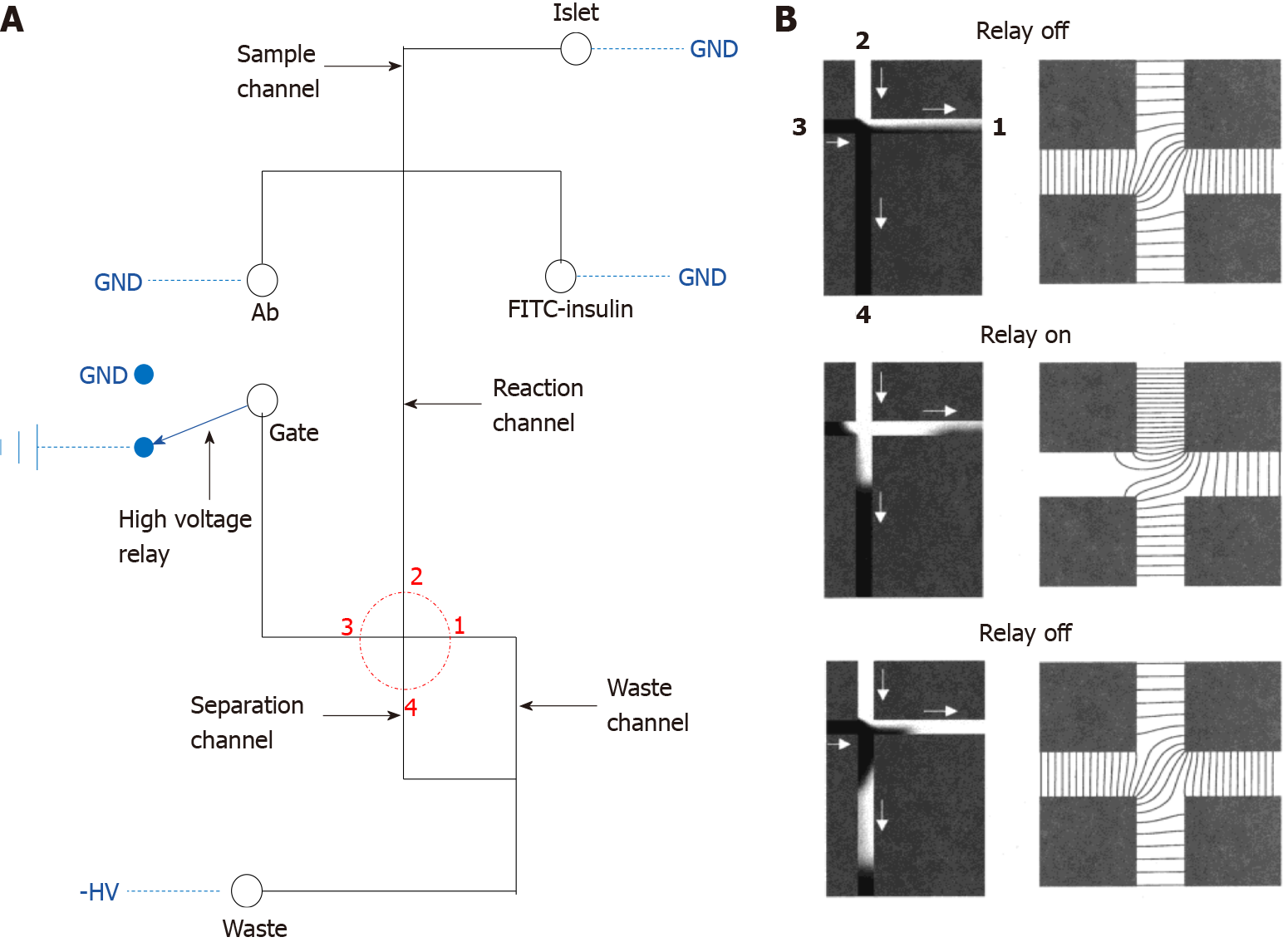Copyright
©The Author(s) 2023.
World J Diabetes. Jan 15, 2023; 14(1): 17-25
Published online Jan 15, 2023. doi: 10.4239/wjd.v14.i1.17
Published online Jan 15, 2023. doi: 10.4239/wjd.v14.i1.17
Figure 1 Diagram of the classical electrophoresis-based immunoassay microfluidic chip.
A: The fluid channel and electric circuit on the microfluidic device. The solid black line represents the fluid channel and the blue dashed line indicates the electric connection, the fluid part consists of the sample, immunoassay buffer, gate and waste port, these ports are separately connected to the ground, high voltage relay or a negative high voltage, the red dotted circle highlights the key separation crossroad on the device; B: Larger image of the red dotted circle. The left panel represents the fluid simulation, white fluid represents the sample, black fluid represents the fluid from the gate port, and the right panel demonstrates the equipotential lines. GND: Ground. A: Citation: Roper MG, Shackman JG, Dahlgren GM, Kennedy RT. Microfluidic chip for continuous monitoring of hormone secretion from live cells using an electrophoresis-based immunoassay. Anal Chem 2003; 75: 4711-4717. Copyright© American Chemical Society 2003. Published by ACS Publications. The authors have obtained the permission for figure using from the American Chemical Society (Supplementary material); B: Citation: Ermakov SV, Jacobson SC, Ramsey JM. Computer simulations of electrokinetic injection techniques in microfluidic devices. Anal Chem 2000; 72: 3512-3517. Copyright© American Chemical Society 2000. Published by ACS Publications. The authors have obtained the permission for figure using from the American Chemical Society (Supplementary material).
- Citation: Li W, Peng YF. Advances in microfluidic chips based on islet hormone-sensing techniques. World J Diabetes 2023; 14(1): 17-25
- URL: https://www.wjgnet.com/1948-9358/full/v14/i1/17.htm
- DOI: https://dx.doi.org/10.4239/wjd.v14.i1.17









